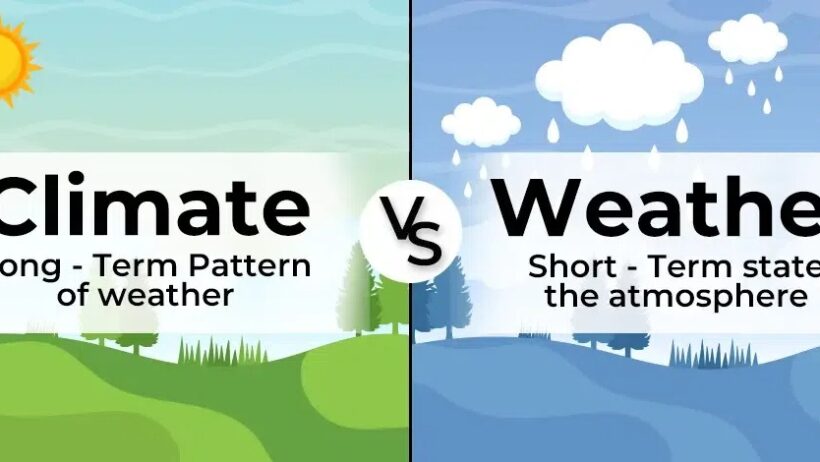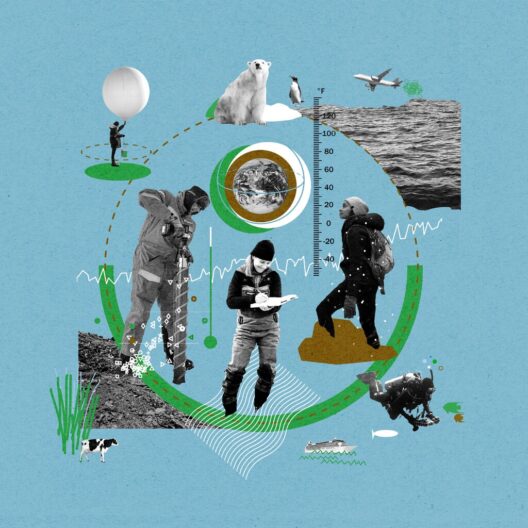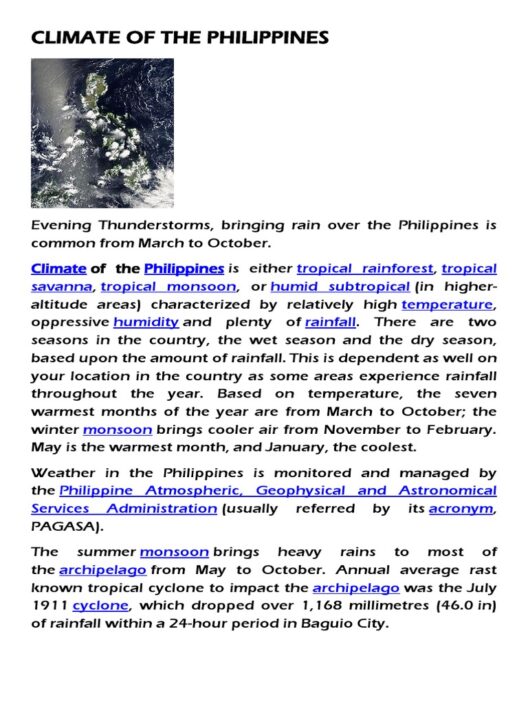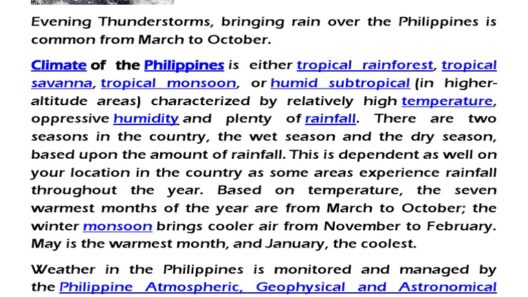Weather and climate are terms often used interchangeably in everyday conversation, yet they represent fundamentally different atmospheric conditions and events. Understanding the distinction is crucial, especially in a world increasingly influenced by climate change. The common observation that “the weather is unpredictable” often leads to a deeper fascination with environmental science and its implications on our lives.
At its core, weather refers to the short-term atmospheric conditions in a particular area at a specific time. These conditions are characterized by attributes such as temperature, humidity, precipitation, wind speed, and visibility. Weather can change from minute to minute, hour to hour, or day to day. For instance, one might experience a sunny morning followed by an afternoon deluge, exemplifying how swiftly weather can shift.
In contrast, climate is the average of these weather conditions over a longer period, typically 30 years or more, for a specific region. Climate encompasses patterns and trends that emerge from observing weather data over time, such as determining whether a region has a temperate climate, arid climate, or tropical climate. These classifications illustrate not only typical weather patterns but also seasonal variations and long-term statistical averages.
The distinction between weather and climate is not just academic; it has profound implications for various sectors including agriculture, urban planning, and public health. Farmers, for instance, rely on climate patterns to determine suitable crops for their regions, while city planners design infrastructure with climate resilience in mind, anticipating extreme weather events that may arise due to shifting climatic norms.
One of the most significant reasons why understanding the difference matters is the increasing impact of climate change. The elevation of global temperatures is reshaping weather patterns, leading to more extreme weather events. These changes can result in phenomena such as more intense hurricanes, prolonged droughts, and record-breaking heatwaves. The incidences of such events remind us that while weather is a snapshot of atmospheric conditions, climate change is a longer-term trend that has dire consequences.
Additionally, misconceptions surrounding weather and climate can significantly hinder public discourse and policy implementation on environmental issues. For example, someone might argue against climate change by referencing a particularly cold winter. Such an argument stems from conflating local weather anomalies with global climate trends. Education on the distinctions between the two can empower individuals to engage in informed discussions that bring about actionable change.
Furthermore, the fascination with weather arises not only from its unpredictability but also from its omnipresence; it affects everyone, everywhere. Each person navigates the day according to the weather forecast—a critical decision-point for activities ranging from commuting to recreational experiences. Conversely, climate plays a more systematic role, influencing societal evolution, ecosystem integrity, and even global geopolitics. The agriculture dependent populations may face food insecurity due to protracted droughts stemming from climate shifts, compelling them to migrate, often leading to socio-economic ramifications.
Understanding local climates is indispensable for fostering sustainability. As regions experience shifts in rainfall patterns and seasonal temperatures, various species within those ecosystems may struggle to adapt. This leads to biodiversity loss, which has cascading effects on food chains and ecosystem functionality. Such impacts underscore the importance of preserving ecosystems that may buffer against extreme weather as well as contribute to carbon sequestration, thereby combating climate change.
Climate change also raises questions about environmental justice. Communities that are already marginalized often bear the brunt of climatic disruptions, despite contributing the least to the issue. Urban heat islands, increased flooding, and limited access to resources exacerbate the inequities faced by these populations. Addressing these disparities requires a nuanced understanding of climate science, coupled with robust policy initiatives aimed at resilience and mitigation.
In sum, the difference between weather and climate is not merely a semantic issue but a critical distinction that shapes our understanding of environmental challenges. Recognizing the interplay between immediate weather phenomena and overarching climate trends allows for a more profound comprehension of the environmental shifts we face. Such comprehension enables informed decision-making at individual, community, and governmental levels, fostering a collective responsibility towards nurturing our planet.
Our fascination with the elements offers a lens through which to examine broader ecological and societal issues. Acknowledging that climate defines long-term patterns while weather represents transient occurrences provides clarity in a time when clarity is needed. Increased awareness can empower collective action, promoting sustainability and resilience in the face of mounting environmental challenges. As we deepen our understanding of these terms, we better position ourselves to engage in meaningful conversations about the planet’s future.








